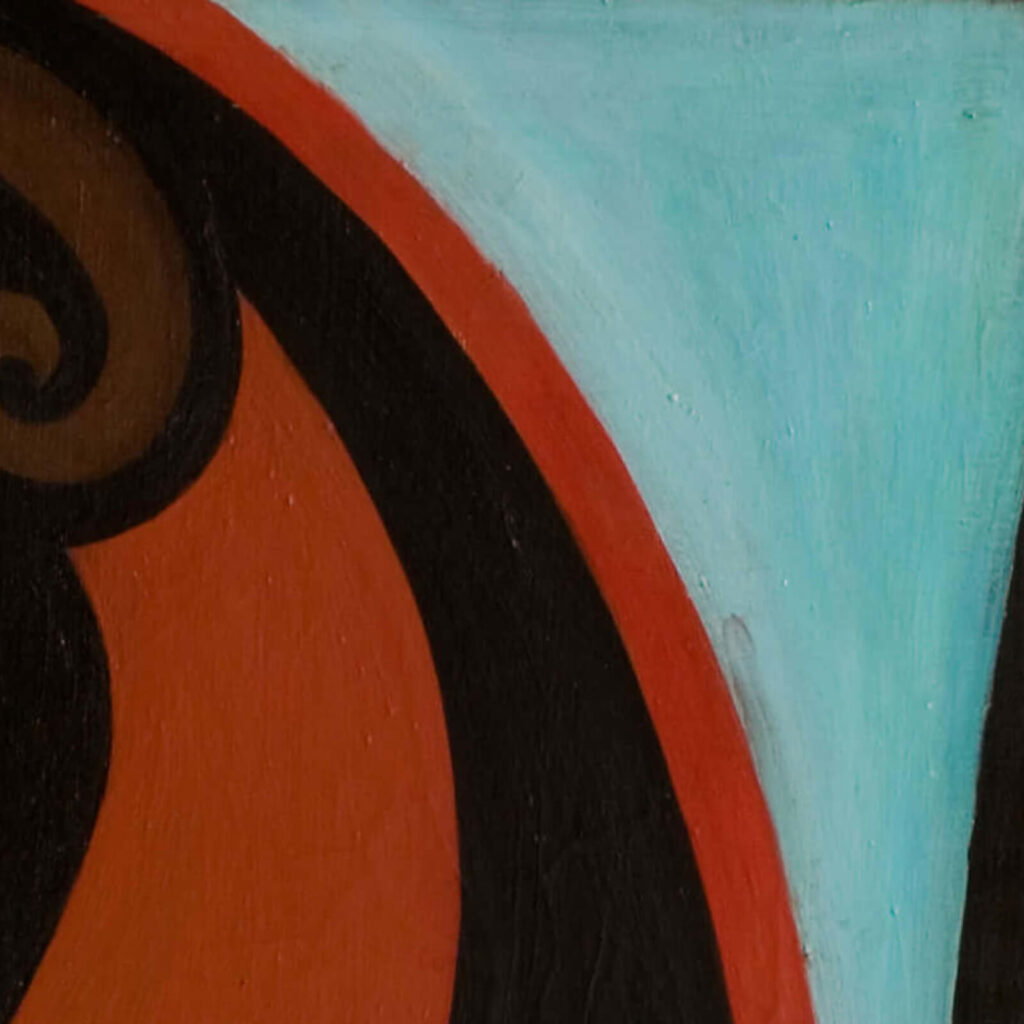Masterpiece Story: Buddha Dated 338
Buddha dated 338 is a masterpiece of Buddhist art and Chinese art with deep historical significance. It exemplifies the early blending of Indian...
James W Singer 14 December 2025
Self-Portrait by Faith Ringgold is a masterpiece of 1960s portraiture, feminist art, and Black identity.
Faith Ringgold (1930–2024) was a pioneering Black female artist who gained artistic exposure in the early 1960s. She was born in Harlem, a neighborhood of New York City, which was the famous epicenter of the Harlem Renaissance during the 1920s and 1930s.
Ringgold felt the local legacy of Black artists, and it empowered her to explore her own artistic career. For more than 60 years, Ringgold painted images exploring her identity and the Black experience in the United States. Ringgold’s Self-Portrait is one such image. It is a masterpiece of 1960s portraiture, feminist art, and Black identity.

Faith Ringgold, Self-Portrait, 1965, Brooklyn Museum, New York City, NY, USA.
Self-Portrait is an oil on canvas measuring 50 in by 40 in (127 cm by 101.6 cm). It portrays Faith Ringgold at the age of 35 in 1965. She wears a blue-green dress with a simple pearl necklace and stud-pearl earrings. Her hair is fashionably coiffed into a backswept bouffant. Her arms are crossed in front of her stomach. A round geometric pattern surrounds her upper body and head. She appears motionless, statuesque, and confident.

Faith Ringgold, Self-Portrait, 1965, Brooklyn Museum, New York City, NY, USA. Detail.
The painting has a bold visual style that whispers of the intense Pop Art of Andy Warhol, a fellow contemporary New York artist of the 1960s. Ringgold’s Self-Portrait has an abstracted Picasso-like flatness that eliminates and minimizes shadows. Her face, hair, and body have very limited shading that causes her round form to appear uniform, more even-toned, and more geometric. For example, her breasts appear as two circles, one olive green and one aqua blue.

Faith Ringgold, Self-Portrait, 1965, Brooklyn Museum, New York City, NY, USA. Detail.
The painting escalates its visual intensity through its bold Matisse-like colors. Ringgold uses a limited color scheme of primary colors. She employs red in the background geometric circle; yellow for her jewelry; blue for the background, facial shadows, and right breast; and green for the dress. The extremely reduced color options empower the painting with brightness and vividness.

Faith Ringgold, Self-Portrait, 1965, Brooklyn Museum, New York City, NY, USA. Detail.
Self-Portrait has hard contours with clearly delineated edges. It has a strong Mondrian-like geometry, especially with the red-and-black oval surrounding Ringgold’s figure. The oval echoes an aura or a halo found in Christian paintings of saints and holy figures of the Bible, and it echoes a mandorla found in Buddhist images of the Buddha or bodhisattvas. Hence, the geometric oval adds the impression of a Madonna icon. Her embracing arms are almost nurturing in a cradling motion, as if a Christ child is expected to be there.

Faith Ringgold, Self-Portrait, 1965, Brooklyn Museum, New York City, NY, USA. Detail.
Faith Ringgold painted Self-Portrait in the midst of the Civil Rights Movement (1954–1968) when the United States was experiencing radical protests against racial segregation, discrimination, and voting suppression. Ringgold was painting her American People series (1963–1967), while she simultaneously completed her Self-Portrait as an expression that she “couldn’t pretend everything was OK” in the United States.

Faith Ringgold, Self-Portrait, 1965, Brooklyn Museum, New York City, NY, USA. Detail.
Self-Portrait is the expressive representation of a Black woman using herself as a Black model to study her self-identity in the midst of a radically changing socio-political environment. Her fixed direct gaze gives a powerful self-assurance that fights the adversity of a Black woman of the 1960s in the United States. Her statuesque body projects immobile justice against the flow of racial bigotry and discrimination that she faces. While this painting is almost 60 years old, the portrait still feels relevant today as the image of an emotionally-strong, fiercely-independent, modern woman.

Faith Ringgold, Self-Portrait, 1965, Brooklyn Museum, New York City, NY, USA. Detail.
However, behind this strong façade there is a quiet and contemplative aspect that deserves respect. She is thinking about her life and her future. She thinks about the lives and the futures of Black people. Self-Portrait is a masterpiece that forces the viewer to confront the artist and unravel the many layers of her identity. She is a woman. She is an artist. She is Black. She is intelligent. She is powerful. She is Faith Ringgold.

Faith Ringgold, Self-Portrait, 1965, Brooklyn Museum, New York City, NY, USA. Detail.
Faith Ringgold, Artist’s website. Retrieved 19 October 2024.
Self-Portrait, Brooklyn Museum Online Collection. Retrieved: 19 October 2024.
Jordi Vigué, Great Women Masters of Art. New York, NY, USA: Watson-Guptill Publications, 2003.
DailyArt Magazine needs your support. Every contribution, however big or small, is very valuable for our future. Thanks to it, we will be able to sustain and grow the Magazine. Thank you for your help!